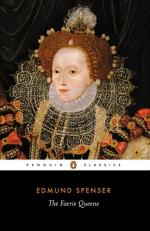|
This section contains 5,892 words (approx. 20 pages at 300 words per page) |

|
SOURCE: Hadfield, Andrew. “Another Look at Serena and Irena.” Irish University Review 26, no. 2 (autumn-winter 1996): 291-302.
In the following essay, Hadfield explores the characterizations of Irena and Serena in The Faerie Queene in relation to Queen Elizabeth I and to Spenser's general attitude toward women.
There has been much recent criticism of The Faerie Queene which has concentrated on Spenser's representation of gender. Sheila Cavanagh's attack on Spenser's misogyny and his masculinisation of concepts of virtue has been countered by Pamela Joseph Benson and Lauren Silberman, who have argued that Spenser was, in fact, a proto-feminist, keen to challenge the hierarchical assumptions underpinning gender roles.1 Interestingly enough, the arguments of all three critics include most of the obviously eroticised women in the poem—Britomart, Amoret, Belphoebe, Florimell, Radigund. With the exception of Benson, they are more concerned with an understanding of sexual politics as a politicisation of sexual relations...
|
This section contains 5,892 words (approx. 20 pages at 300 words per page) |

|


